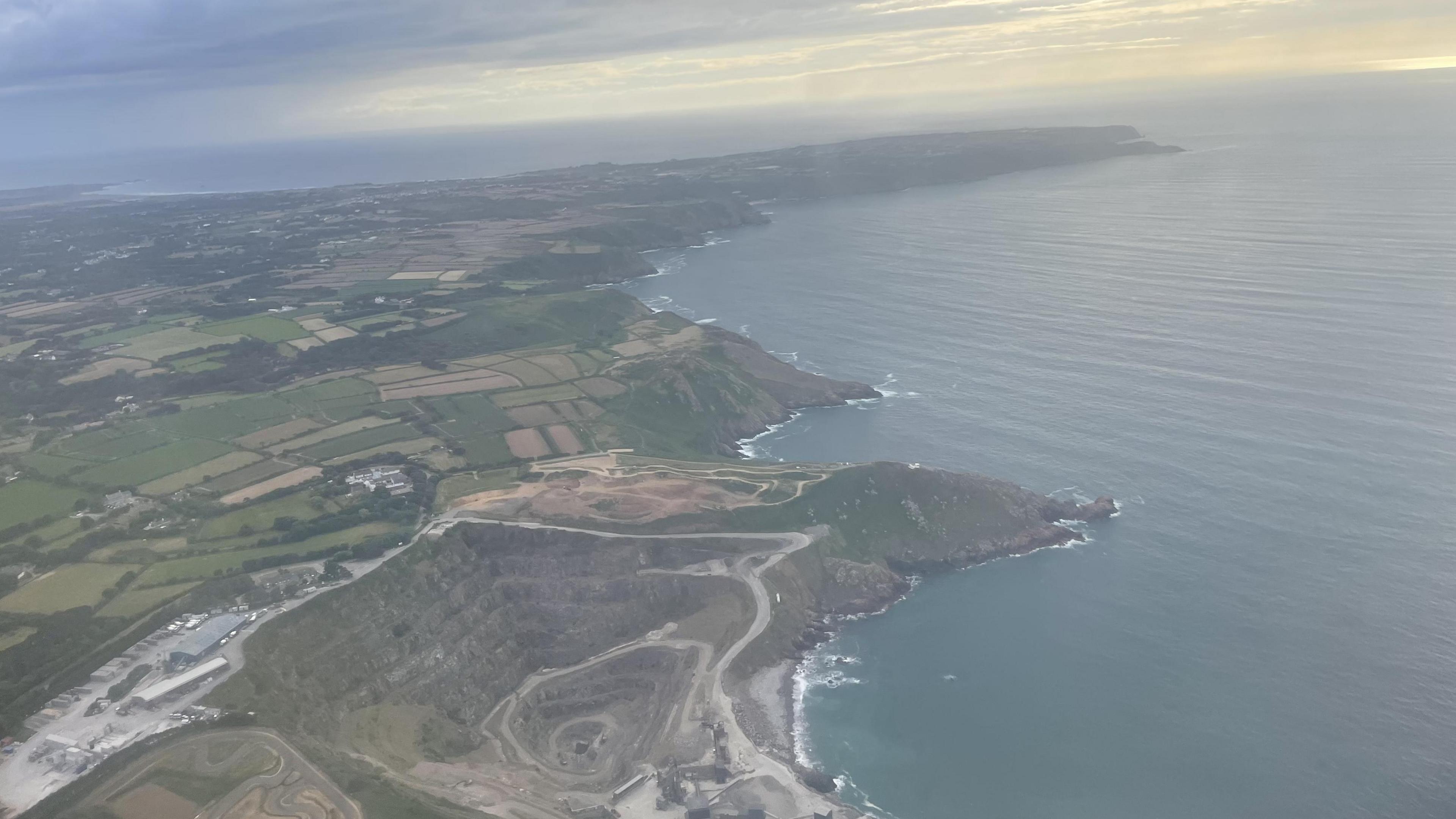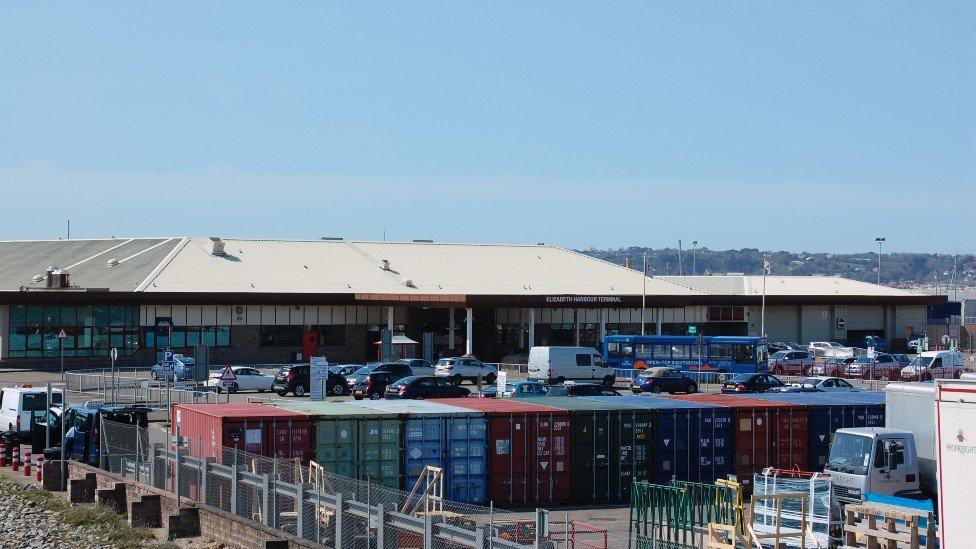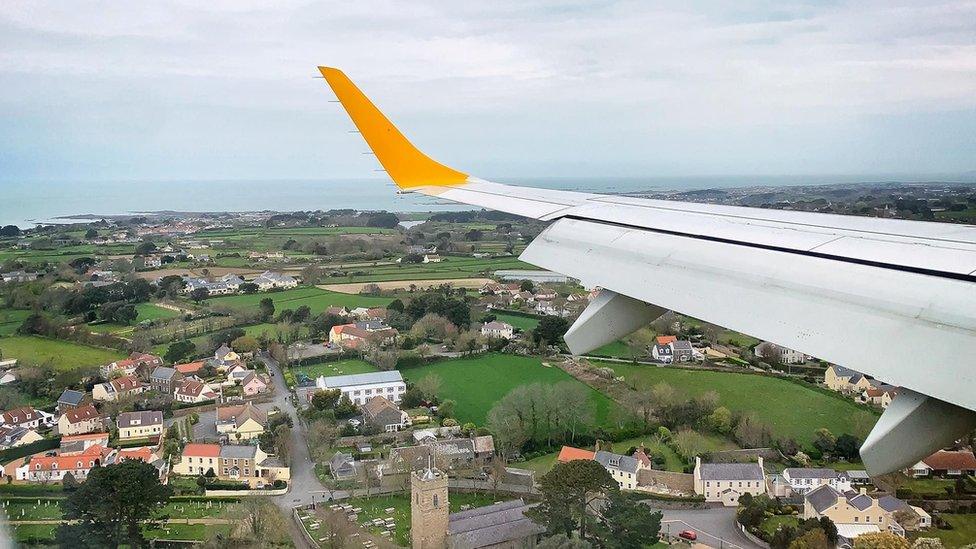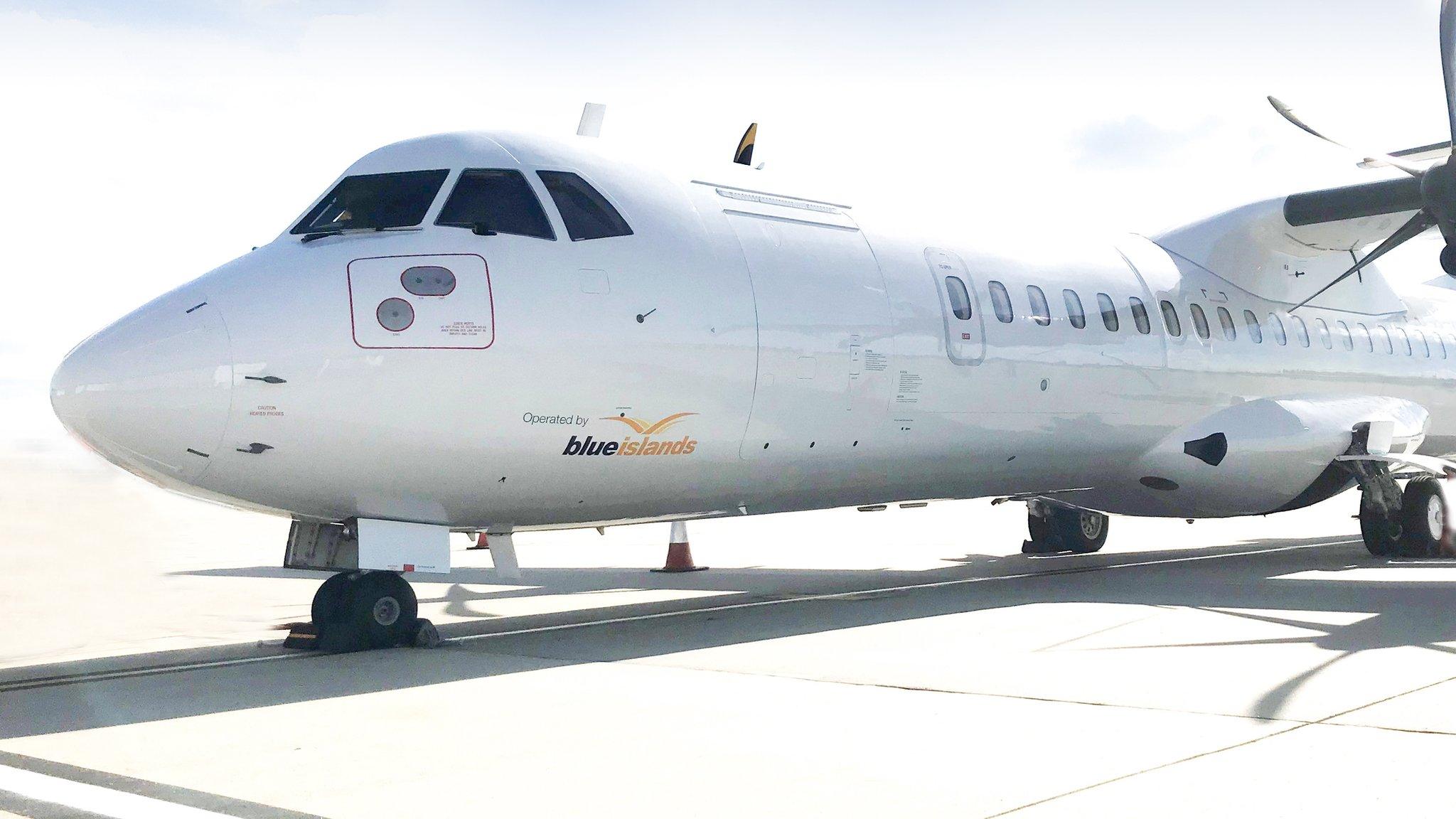Jersey flight routes changes aim to reduce carbon emissions

Ports of Jersey says a change in routes will reduce carbon and noise emissions
At a glance
Departure and arrival routes to Jersey airport will change to reduce carbon emissions
Ports of Jersey Air Navigation said it was part of its plan to create a more "sustainable future" for the island
The new routes will be implemented by early 2023
- Published
Changes to departure and arrival routes to reduce CO2 emissions will be made early 2023, officials said.
Ports of Jersey Air Navigation plans to reduce its emissions as part of its Ports Planet and People plan, committing it to play a "leading role in developing a sustainable future" for the island.
It said new procedures would create more direct routing through "modern, satellite-based navigational aids".
The Standard Instrument Departures (SIDs) and Standard Instrument Arrivals (STARs) are the specific paths aircrafts follow when departing and arriving in Jersey.
Air traffic controller and airspace development manager Richard Price said a total of 17 SIDs and 15 STARs had been "reviewed and modernised", and two of both removed.
"The more efficient climb and continuous descent operations will reduce fuel consumption, CO2 emissions and noise, all of which are important to today’s airlines," he said.
Mr Price added the changes would "reduce the time aircraft need to fly over the island" and operators could save about 1.5% in fuel costs.
Air traffic controller and Jersey ATC sustainability manager Mike Stephens said the changes would help it reduce carbon emissions.
"These new procedures will reduce the track distances flown by aircraft in and out of Jersey Airport and enable more fuel-efficient climb and descent profiles," he said.
Ports of Jersey confirmed work to validate plans would be completed by 2022 and implemented in early 2023.
Related topics
- Published27 September 2022

- Published18 March 2022

- Published22 November 2021
